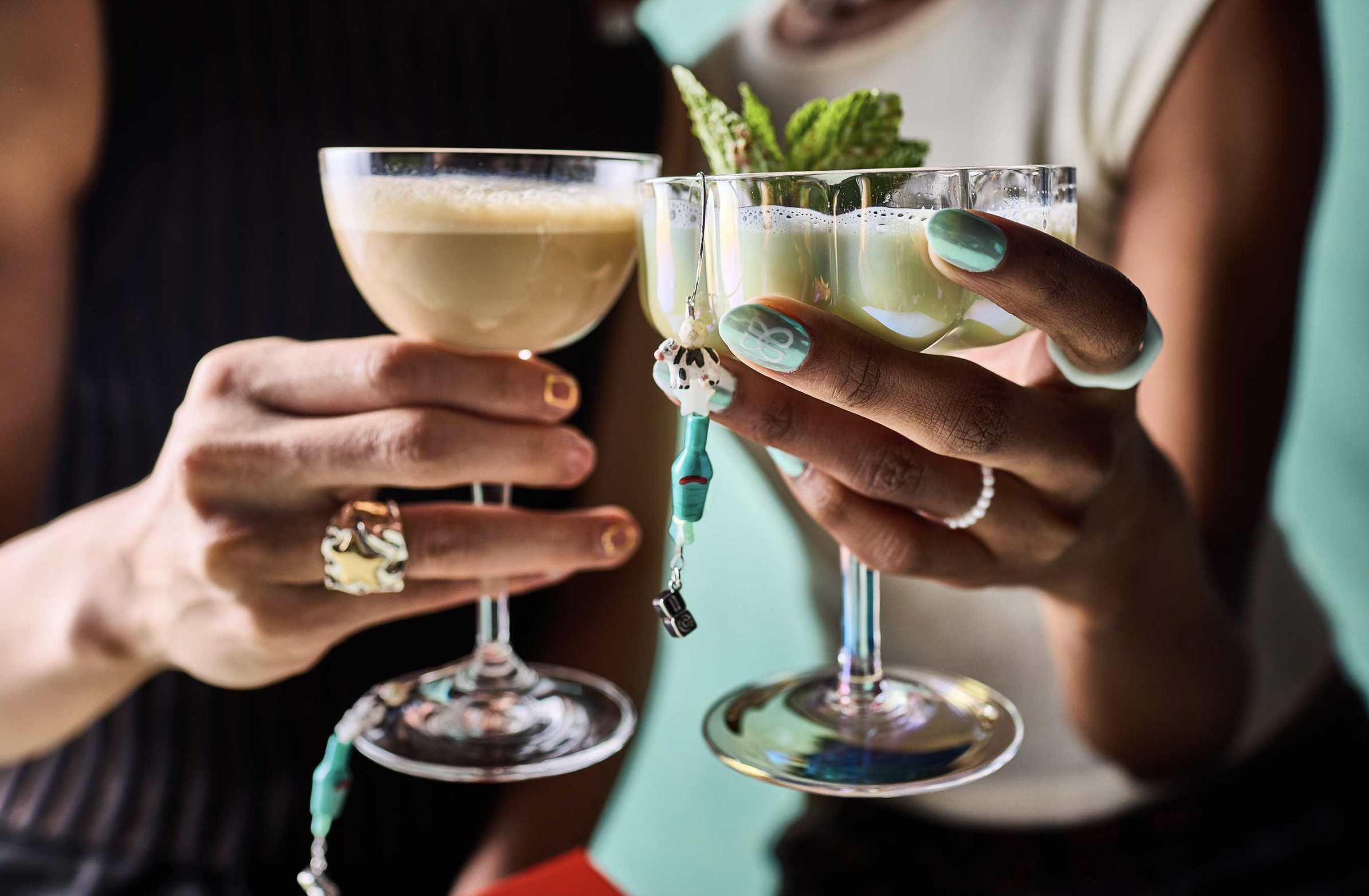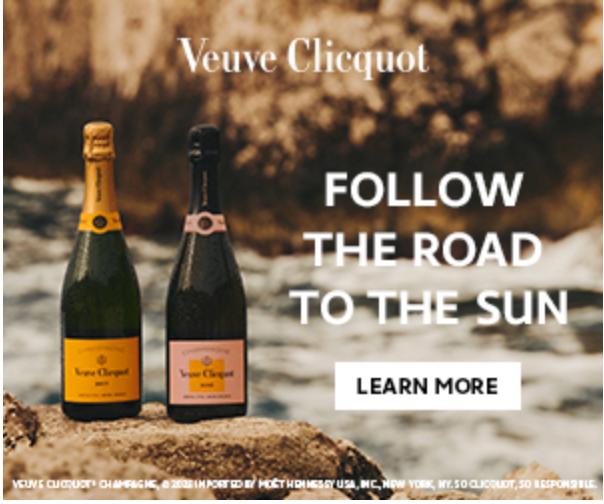St Patricks Day in LA: Cocktail Collab as “A Taste of Green’ as Bailey’s Partners with Ian Charms
St. Patrick’s Day is now only a short leap away as we gear up to celebrate the Emerald Isle.
With the turn of the season comes an invitation to swap out your drab winter wardrobe for brighter spring hues because this just in – green is the new black.
St Patricks Day Cocktail Collab Brings Combines Flavor and Jewelry
This St. Patrick’s Day, Baileys Original Irish Cream Liqueur is partnering with celebrity-loved jewelry brand Ian Charms to release an exclusive charm collaboration that will make the ultimate fashion statement for the holiday.
The two iconic brands are celebrating their Irish roots with a limited-edition Baileys x Ian Charms Necklace & Cocktail Charms Set to make sure both you and your cocktail have the perfect touch of green for your celebrations.
“Baileys has been a beloved treat in my family for generations
and it’s exciting to finally be partnering with a brand that lets me celebrate my Irish heritage,”
Lisa Sahakian
Founder and CEO of Ian Charms
“Designing this charm set was incredibly fun and we’re thrilled to be offering our customers something truly unique to celebrate St. Patrick’s Day with.”
St Patricks Day Cocktail Collab is Necklace & Cocktail Charms Set
The Baileys x Ian Charms Necklace & Cocktail Charms Set includes two distinct pieces – a necklace to complement any outfit and a cocktail charm to adorn onto the stem or rim of your cocktail glass.
The design features an eccentric combination of handmade charms, beads and pearls inspired by Baileys Original Irish Cream Liqueur’s unapologetically delicious ingredients and cocktails.
The one-of-a-kind charm set also pulls elements from the limited-time-offering Baileys Vanilla Mint Shake Irish Cream Liqueur as well as quintessential Irish emblems, making this set the perfect accessory for your St. Patrick’s Day celebrations.
“We are delighted to be releasing this limited-edition collaboration
with a beloved brand like Ian Charms
to give adults a new way to indulge in St. Patrick’s Day celebrations,”
Camille Hemming
Senior Brand Manager of Baileys & Liqueurs, DIAGEO North America
“Between the classic Baileys Original Irish Cream Liqueur or the green-themed Baileys Vanilla Mint Shake that’s making a return for the holiday, we hope to offer more ways than one to toast to our brands’ Irish roots.”
“This exclusive drop marks Baileys’ second piece of Treat Couture, fashion-forward collaborations that inspire adults to indulge in unique wearable creations.
To celebrate the indulgence of fashion in the lead up to St. Patrick’s Day, treat yourself to a signature cocktail featuring beloved Baileys Original Irish Cream Liqueur and minty green limited-time-offering Baileys Vanilla Mint Shake Irish Cream Liqueur.”
BAILEYS ESPRESSO MARTINI
Ingredients:
- 1.5 oz Baileys Original Irish Cream
- 0.75 oz espresso
- 0.75oz Ketel One Vodka
- Coffee Beans, to garnish
Method:
- Fill shaker with ice
- Add all ingredients and shake
- Strain into a cocktail glass
- Garnish with coffee beans
VANILLA MINT MARTINI
Ingredients:
- 2 oz Vanilla Mint Shake
- 0.5 oz Fernet Branca Menta
- 3-4 dashes Absinthe
Method:
- Shake with 1 ice cube for dilution
- Strain into cocktail glass
- Garnish with grated chocolate + mint sprig
The limited-edition Baileys x Ian Charms Necklace & Cocktail Charms Set is available exclusively on IanCharms.com while supplies last. Ian Charms is a female-owned, handmade jewelry company based in LA that has amassed a loyal fan base of celebrities and consumers alike. Ian Charms will donate all proceeds from the charm set sales to CurePSP, and Baileys will match the amount with a donation to the National Association of Women Business Owners (NAWBO), a non-profit educational foundation supporting emerging and established women entrepreneurs.
Baileys encourages consumers of legal drinking age to treat themselves responsibly this season.
For more information, please visit www.BAILEYS.com.
Ian Charms is a female owned, handmade jewelry company
Ian Charms is a female owned, handmade jewelry company based in LA. Named “Ian” charms because the creator’s last name (Lisa Sahakian), like many Armenian names, ends in those three letters. For those who like to adorn their necks and wrists with a more personal flair, Ian Charms will work with you to craft a custom piece, just start the process by ordering the type of custom jewelry you’d like.
Notable fans of the brand include Justin Bieber, Dua Lipa, Julia Fox & Doja Cat, among others.
IanCharms.com
@iancharms
NAWBO is the unified voice of America’s more than 14 million women-owned businesses
Founded in 1975, NAWBO is the unified voice of America’s more than 14 million women-owned businesses representing the fastest growing segment of the economy. NAWBO is the only dues-based organization representing the interests of all women entrepreneurs across all industries.
NAWBO develops programs that help navigate women entrepreneurs through the various stages of their business growth. To learn more about NAWBO, please visit www.nawbo.org.
To learn more about NAWBO’s non-profit educational foundation, the NAWBO Institute, please visit www.nawbo.org/university.
BAILEYS Irish Cream Liqueur
BAILEYS launched in Ireland in 1974. It is now available in 180 markets worldwide and is the number one selling liqueur in the world.
Owned by Diageo plc, BAILEYS is currently ranked 7th among all distilled spirits sold worldwide. It’s the signature delicious balance of Irish Cream, whisky and fine spirits that makes BAILEYS Original Irish Cream the perfect little indulgence when you need a break from your daily routine.
The BAILEYS portfolio includes Original Irish Cream, Chocolate, Salted Caramel, Vanilla Cinnamon, Espresso Crème, Strawberries & Cream and Almande.
For more information on BAILEYS Original Irish Cream, please visit us at www.BAILEYS.com.





[…] […]
[…] and Barware enters the cocktail market with their premium cocktail smoker, including 6 […]
[…] and Barware enters the cocktail market with their premium cocktail smoker, including 6 […]
[…] and Barware enters the cocktail market with their premium cocktail smoker, including 6 […]
[…] and Barware enters the cocktail market with their premium cocktail smoker, including 6 […]
[…] and Barware enters the cocktail market with their premium cocktail smoker, including 6 […]